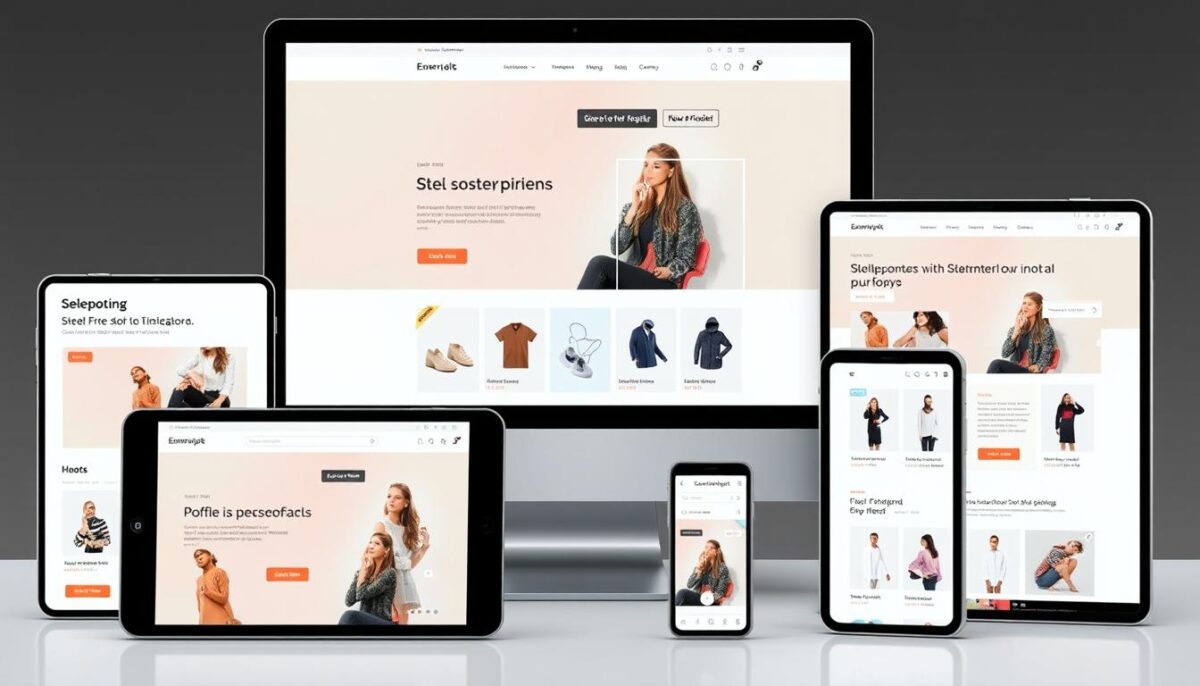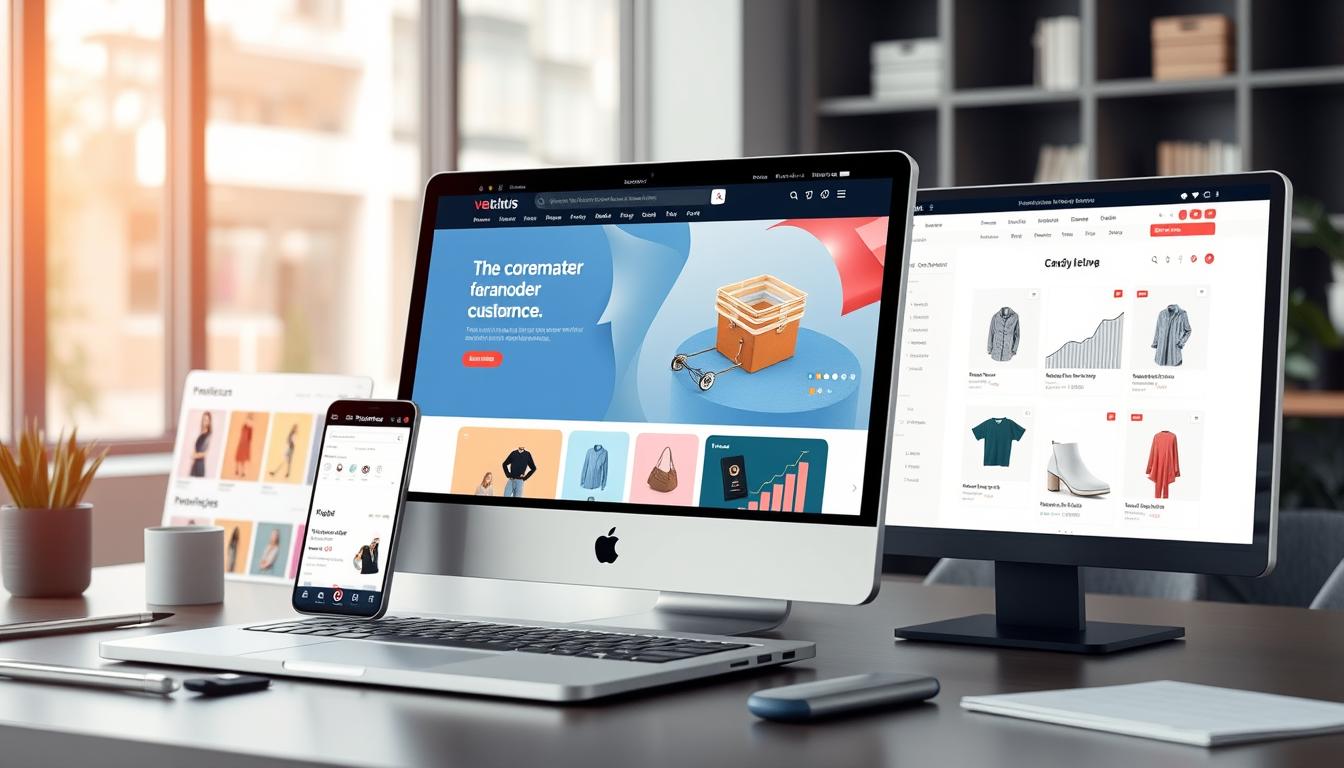E-commerce Web Design: Best Practices for Success
E-commerce web design is crucial for any online business aiming for long-term success. A well-designed online store can significantly enhance user experience, encouraging visitors to make purchases and thereby boosting conversions. This introduction will explore the best practices that make an e-commerce site not only visually appealing but also highly functional. As we delve deeper, you’ll discover informative strategies that can elevate the quality of your online store design. Recent studies suggest that effective e-commerce web design leads to notable increases in sales performance, reinforcing the need to prioritize user experience and responsive design.
Understanding the Importance of User Experience in E-commerce Design
User Experience, often referred to as UX, plays a crucial role in the design of e-commerce platforms. It encompasses every aspect of a customer’s interaction with a website, including usability, accessibility, and overall satisfaction. By focusing on elements such as intuitive navigation and visually appealing layouts, businesses can create an engaging online experience. Positive e-commerce UX directly influences customer satisfaction, encouraging repeat visits and fostering brand loyalty.
What is User Experience (UX)?
UX design aims to improve how users interact with e-commerce websites. It involves understanding customer needs and preferences, which ultimately leads to tailored experiences that resonate with shoppers. Aspects relevant to e-commerce UX include ease of use, clear product information, and responsive support. Effective UX design not only enhances customer satisfaction but also creates an environment that encourages shopping and increases customer retention.
Impact of UX on Sales and Conversions
The UX impact on sales is significant, with studies revealing that a thoughtful design can improve conversion rates by as much as 200-300%. A seamless experience helps in reducing cart abandonment rates, allowing businesses to retain customers who might otherwise leave the site. Research by the Baymard Institute highlights that usability issues are a major reason customers abandon their carts during checkout.
Many brands have successfully transformed their e-commerce websites through strategic UX improvements, resulting in substantial rises in e-commerce revenue. To illustrate this, consider the following table showcasing average conversion rate improvements post-UX design enhancements across several companies:
| Company | Before UX Improvements (%) | After UX Improvements (%) | Conversion Rate Increase (%) |
|---|---|---|---|
| Brand A | 1.5 | 4.5 | 200 |
| Brand B | 2.0 | 5.5 | 175 |
| Brand C | 2.5 | 7.0 | 180 |
| Brand D | 3.0 | 8.0 | 167 |

E-commerce Web Design: Best Practices for Success
In today’s digital landscape, creating an effective e-commerce website requires attention to various essential elements. Emphasizing responsive design, optimizing page load speed, and utilizing visual elements can significantly enhance user experience and boost conversions.
Responsive Design for Mobile Users
Responsive design stands as a cornerstone in accommodating the escalating trend of e-commerce mobile traffic. With over 50% of global web traffic stemming from mobile devices, ensuring a user-friendly design is imperative. A responsive site adapts seamlessly across different screen sizes, improving accessibility and lowering bounce rates. This adaptive layout enhances engagement, inviting users to explore products without hassle.
Optimizing Page Load Speed
Page load speed plays a critical role in website performance and directly influences conversion impact. Research shows that even a one-second delay in loading can diminish conversions by 7%. Strategies to enhance load speed include optimizing images, leveraging browser caching, and reducing server response time. Implementing these practices ensures a smoother shopping experience, ultimately leading to higher sales rates.
Effective Use of Visual Elements
The application of visual elements in e-commerce holds the power to captivate users and boost conversions dramatically. High-quality product images and engaging visuals not only enhance e-commerce design aesthetics but also forge an emotional connection with customers. A well-structured visual hierarchy guides user attention effectively, with research indicating that 93% of consumers consider visual appeal critical when making purchasing decisions. Employing compelling visual storytelling can transform browsing into buying.

| Best Practices | Benefits |
|---|---|
| Responsive Design | Increases mobile traffic and reduces bounce rates |
| Page Load Speed Optimization | Enhances user experience and improves conversion rates |
| Use of High-Quality Visual Elements | Drives customer engagement and fosters brand loyalty |
Key Features to Include in Your E-commerce Website
To create a successful e-commerce platform, it is crucial to incorporate essential features that enhance the user experience and streamline the purchasing process. A robust shopping cart is a fundamental element that not only facilitates user-friendly checkout but also helps in reducing cart abandonment rates. Features like ‘save for later’, wish lists, and easy edit options can significantly improve usability and ensure that customers have a satisfying online shopping experience.
Shopping Cart Functionality
An efficient shopping cart is vital for any e-commerce site. Users should be able to easily review their selected items, modify quantities, and navigate to the checkout seamlessly. According to data from the Baymard Institute, addressing common pain points such as unclear pricing and difficult navigation can mitigate cart abandonment. The goal is to provide an intuitive cart interface that allows for quick transaction completion, thereby boosting customer satisfaction and encouraging repeat business.
Secure Payment Gateways
Establishing trust in e-commerce is essential, especially when it comes to secure payment gateways. As consumer concerns around online security continue to grow, it’s important to offer multiple trustworthy payment options that prioritize security and payment processing efficiency. Statista’s findings indicate that many shoppers prefer sites that clearly communicate their security measures, making it imperative to integrate well-known, secure payment solutions into your platform.
Product Search Functionality
The inclusion of effective product search functionality can greatly enhance user engagement on e-commerce sites. A well-designed search feature, complete with autocomplete suggestions and detailed filters, can help users quickly navigate through a vast catalog of products. Implementing e-commerce search optimization techniques, such as displaying relevant product information in search results, can lead to improved conversion rates and greater customer satisfaction, ultimately translating to increased sales.






